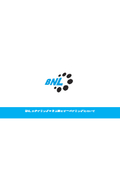Lower Bearing for Steering Column *Explanation with Photos Regarding Rigidity
The clip and bolt holes on the outer diameter and the special ribs on the inner diameter, designed with integration, reduce the man-hours required for the counterpart components such as jackets and shafts! Cost reduction is possible.
We handle lower bearings for steering columns. Compared to conventional metal bearing units, we can achieve a weight reduction of about 20-50%, and we can reduce the rotational torque to about one-third. In terms of rigidity, we have achieved rigidity that is equal to or greater than that of traditional metal bearings. 【Features】 ■ Lightweight ■ Flexible design ■ No grease required ■ Low rotational torque ■ Easy assembly ■ Cost reduction *For more details, please refer to the PDF document or feel free to contact us.
basic information
【Specifications (Partial)】 ■Structure: Double-row deep groove ■Ultimate Load: 12kN ■Static Load: 3kN ■Limit Speed: 1200rpm ■Weight: 38g *For more details, please refer to the PDF document or feel free to contact us.
Price range
Delivery Time
Applications/Examples of results
For more details, please refer to the PDF document or feel free to contact us.
Detailed information
-
Comparison of Rigidity Tests between Resin Bearings and Metal Bearing Units: Before the Thrust Load Test of Resin Bearings
-
Comparison of Rigidity Tests Between Resin Bearings and Metal Bearing Units No issues with rigidity tests after thrust load tests on resin bearings.
-
Comparison of Rigidity Tests between Resin Bearings and Metal Bearing Units No issues with rigidity tests after the thrust load test of the resin bearings.
-
Comparison of Rigidity Tests between Resin Bearings and Metal Bearing Units: Before the Thrust Load Test of Metal Bearings
-
Comparison of Rigidity Tests between Resin Bearings and Metal Bearing Units After the thrust load test of the metal bearings, deformation occurred in the rigidity test results.
-
Comparison of Rigidity Tests between Resin Bearings and Metal Bearing Units After the thrust load test of the metal bearings, deformation occurred in the rigidity test results.

























































